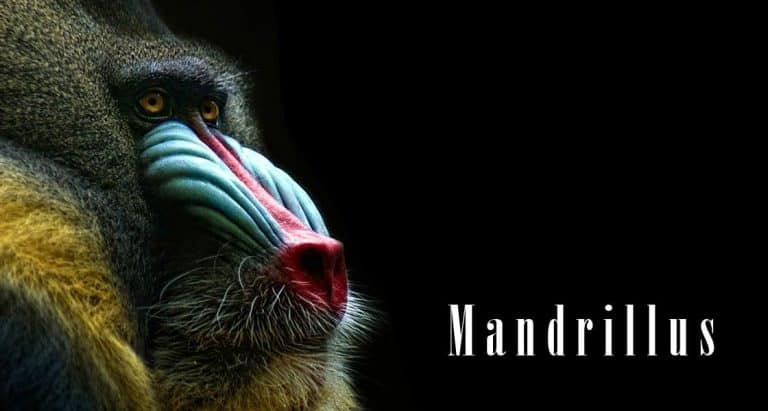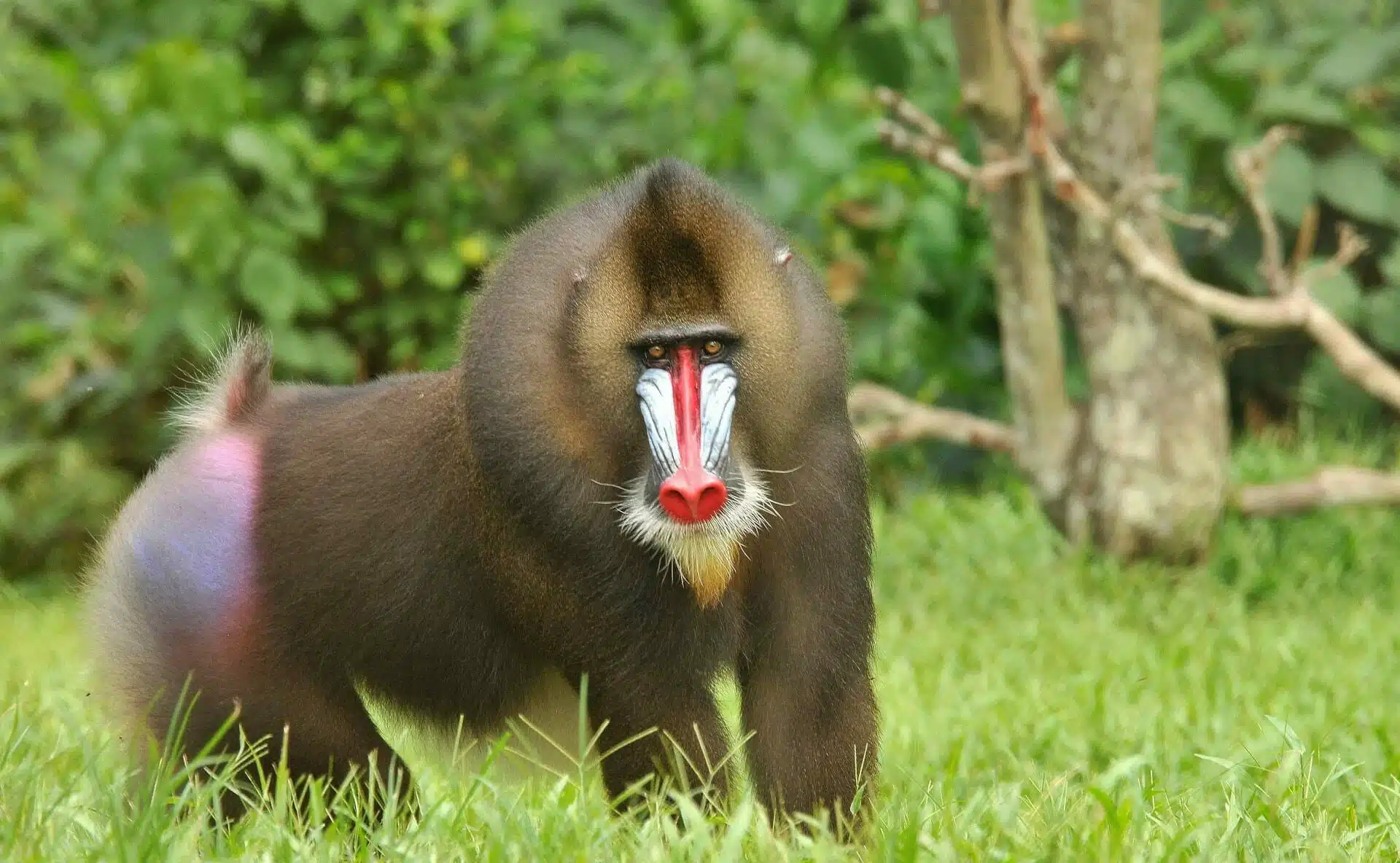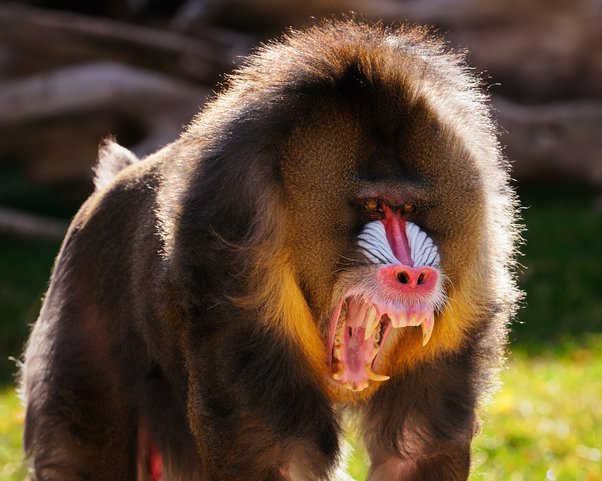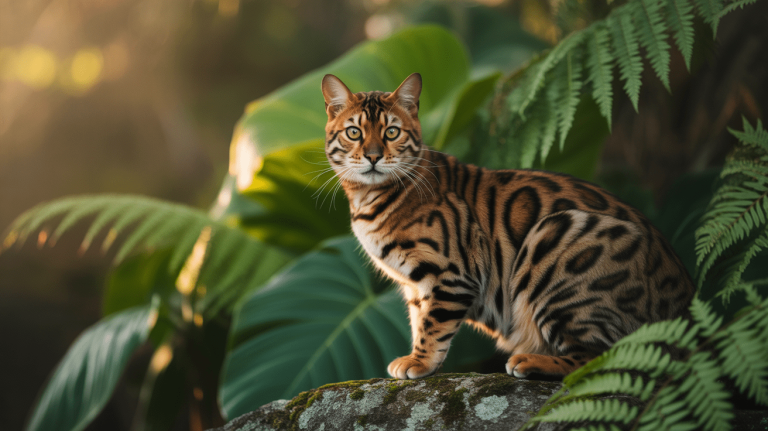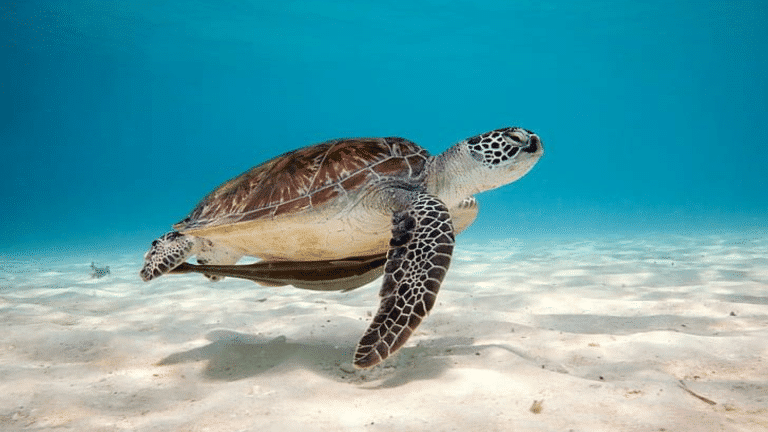Do you think monkeys are dangerous? Well, it depends upon your behavior towards them. Monkeys are usually happy and make us laugh with their funny moves.
We enjoy seeing them swing around trees, talk to each other, and be charming. But at the same time, not every monkey is the same, and there’s one kind, the Mandrill, that’s a bit different.
Mandrills are completely different from the usual ones; they look different and act uniquely. People think Mandrills can be dangerous, and we will talk about that.
Here, we will explore Mandrills to discover why some see them as the most dangerous monkeys.
How is the Mandrill the Most Dangerous Monkey?
Let’s check out the characteristics of the Mandril to know it better and why people consider it the most dangerous monkey.
1. Physical Appearance
The Mandrill, scientifically known as Mandrillus sphinx, can be easily distinguished by its vibrant and complicated facial coloring.
Usually, the male mandrills have bright marks on their faces that look like a mix of colors and shapes.
These cool face marks show who the boss is in their group. Although they look cool, these special marks also say, “Watch out!”
They use them when mad at other Mandrills or feel something might be dangerous.
2. Formidable Size and Strength
Mandrills are strong monkeys; the males can be as heavy as 77 pounds and about 3 feet long.
Their big size and strength make them tough, especially when they argue about where they live or who gets to be with a female.
Their strong mouths have sharp teeth, making them even stronger in fights.
3. Aggressive Social Structure
Mandrills live together in big groups called troops, with a leader called the alpha male. In these groups, there’s a kind of order where everyone wants to be the boss.
The alpha male, usually the biggest one with colorful markings, keeps everyone in line by scaring them and showing off how tough he is.
If there’s a fight with other male Mandrills or anything that seems like a danger, things can get serious quickly, showing why Mandrills might be considered risky.
Why the Mandrill is Considered Dangerous?
The Mandrill is considered to be dangerous because of its unique mix of looks and behaviors.
First of all, their bright facial colors, though eye-catching, are like a signal. Mandrills show their colorful faces when things get tense to warn others that they’re ready to fight.
Next, the male Mandrills are big and strong, which can be risky. In the jungle, fights over food, land, or having a girlfriend can quickly become serious.
Their strong mouths and sharp teeth make them powerful, and they can hurt others or anything they see as threatening.
Moreover, Mandrills are a bit unpredictable. Even though they play and act friendly in their group, things can change fast.
They might suddenly get aggressive if something outside or inside their troop makes them feel threatened.
This makes it hard for people or other animals to know when they might have a problem with Mandrills in the jungle.
Ultimately, Mandrills are seen as risky because of their colorful faces, strong bodies, the way they live together, and the fact that they can be unpredictable.
Understanding these things is super important for scientists and anyone coming across Mandrills in their natural home to stay safe.
Interested in learning more? Check out our previous blog, where we’ve covered the intricacies of monkey jokes for kids in detail!
Conclusion
In the animal family, the mandrill is a special monkey that fascinates us but also makes us a little careful.
It catches our eyes because it looks unique with its colorful face and big size, but it can be tricky due to how it acts in groups and its unpredictable behavior.
Even though mandrills are interesting creatures, humans must treat their homes respectfully and understandingly.
When we try to protect them, we must consider keeping these amazing creatures safe and ensuring people around them stay safe.
Mandrill teaches us to explore more about the natural world in this balance between likeness and being careful.
By learning and understanding, we can make friends with the Mandrill and all the other fascinating animals.
Frequently Asked Questions
What is the Most Dangerous Monkey in India?
In India, the Rhesus Macaque is often considered the most dangerous monkey. These monkeys can be aggressive, especially in urban areas, where they sometimes interact with humans.
It’s important to be cautious and avoid provoking them to prevent potential conflicts or harm.
Are Mandrills Dangerous?
Yes, Mandrills can be considered dangerous. With their vibrant face colors, strong bodies, and unpredictable behavior, they stand out among monkeys.
Understanding their nature and approaching them with caution in the wild is important to avoid potential conflicts.
What to Do if a Monkey Bites You in India?
If a monkey bites you in India, wash the wound with soap and water, apply antiseptic, and cover it with a clean bandage. Get medical help for rabies and tetanus vaccinations.
Report the incident to local authorities for guidance. Avoid provoking monkeys, stay calm, and keep a safe distance to prevent such incidents in the first place.
Can Monkeys Harm Humans?
Yes, monkeys can harm humans. Monkeys might bite or scratch if they feel threatened or provoked. It’s important to keep a safe distance, avoid feeding them, and not engage in aggressive behavior.
Respecting their space helps prevent harm and ensures a safer coexistence between humans and monkeys.

